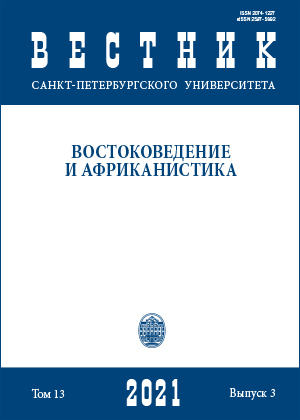Problems of British Bangladeshis’ Adaptations
DOI:
https://doi.org/10.21638/spbu13.2021.302Abstract
The novel Brick Lane by British writer Monica Ali provides a vivid sketch of the life of Bangladeshis both at home and in London, where the largest community of people from Bangladesh lives outside South Asia, primarily natives of Sylhet County. The book got its name due to the street, which has become a distinctive center of concentration for Bengalis in the capital of Great Britain. Ali’s novel Brick Lane can be regarded as a source on the recent history and ethnography of Great Britain and Bangladesh. The novel examines the peculiarities of the acculturation of Bengalis in England, identifies the points of conflicts between the host society and migrants, the growth of domestic racism in the place of concentration of migrants perceived as outsiders and the threat to traditional British values. The main characters of the novel — spouses Chanu and Nazneen, as well as their daughters — found themselves at the junction of two worlds: the European metropolis and the Asian rural hinterland. The work also depicts the conflict between representatives of different generations: between labor migrants, who arrived in England twenty or thirty years ago, recently arrived migrants and between descendants of migrants born in London who consider England as their homeland and Bangladesh as a distant country. Ali in her novel describes options for a way out of the conflict of civilizations in which the main characters were involved. Shanu, unable to achieve career growth and improve his social status, decided to leave London, while Nazneen and their daughters preferred to remain in the city.
Keywords:
Monica Ali, Brick Lane, immigration, adaptation, ethnic and racial minorities, selfidentification, Sylhet, Bangladesh, United Kingdom
Downloads
References
Downloads
Published
How to Cite
Issue
Section
License
Articles of "Vestnik of Saint Petersburg University. Asian and African Studies" are open access distributed under the terms of the License Agreement with Saint Petersburg State University, which permits to the authors unrestricted distribution and self-archiving free of charge.





